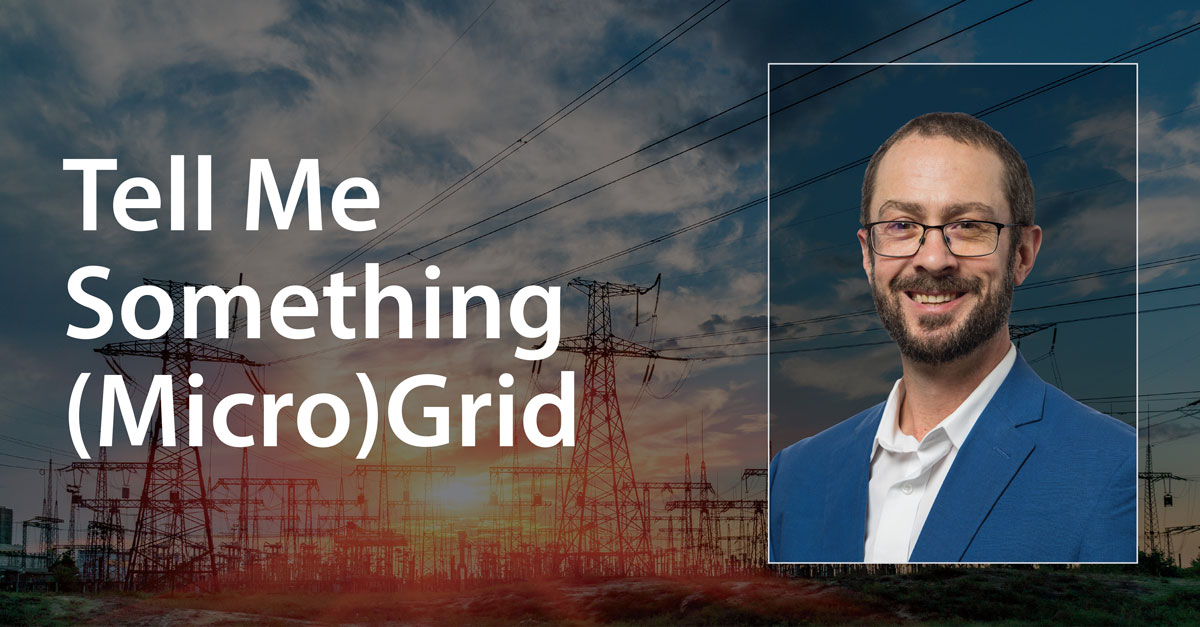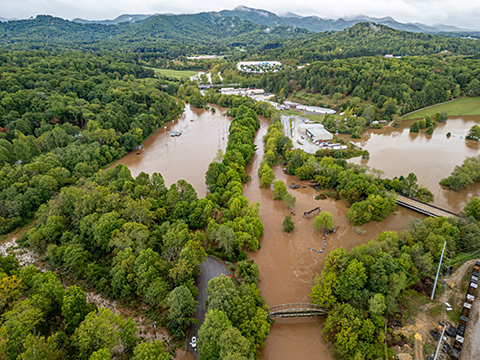Microgrids Could Enhance Grid Resilience
NREL Researcher’s Personal Experience Inspires His Passion To Improve Local Grid Resilience

This installment of the National Renewable Energy Laboratory’s (NREL’s) Tell Me Something Grid series features Rory McIlmoil, a researcher in NREL’s Grid Planning and Analysis Center. McIlmoil shares how microgrids could unlock greater grid resilience in the wake of natural disasters like Hurricane Helene.
“Energy resilience” is a very broad term. It can mean anything from the ability to recover from significant outages to strengthening areas that may be vulnerable to impacts from weather-related disasters.
With electricity demand projected to soar over the next five to 10 years, I am both excited and proud to be researching grid resilience. Right now, from a resilience perspective, one of the biggest questions we are trying to answer is, “How do we get power to where it is needed the most, when it is needed the most?” A key part of this research is figuring out how to maximize emergency service provisions in the event of natural disasters.
During my time at NREL, I have been involved in a broad range of energy-related topics, but local energy resilience has always been very important to me. While it is just one piece of the bigger resilience picture, I think being able to give people access to reliable, affordable power, particularly in emergencies, is critical for communities as they begin to recover from a disaster.
Grid Resilience in My Community
I have lived in the mountains of western North Carolina for about 10 years. When Hurricane Helene hit last September, tens of thousands of people were without power and water for days—as much as nearly two weeks for me and the surrounding community. In my neighborhood, we are all on water wells, so when the power goes out, we also lose water. Those are two significant impacts that can have major consequences, especially for retired and medically vulnerable residents.

Hurricane Helene did not just knock down trees and take out the local distribution networks; it isolated a lot of people because the severe flooding wiped out public and private bridges and destroyed roads, especially in the more rural and mountainous areas like those around Boone and Asheville.
As a volunteer firefighter, I helped respond in the days after the storm, and our fire station served as a resource hub for essential supplies and aid. The station was partially powered by a single diesel generator and offered satellite internet for department staff and residents to use as needed. A microgrid could have played a pivotal role in helping reestablish power more quickly and completely, avoid the long-term outage, and ensure continued access to essential services like water for impacted residents.
The U.S. Department of Energy defines a microgrid as a group of interconnected loads and distributed energy resources within clearly defined electrical boundaries that acts as a single controllable entity with respect to the grid. Microgrids can operate in either grid-connected or in island mode, including entirely off-grid applications. They can run off of distributed generation sources or battery energy storage systems.
In the event of an outage, microgrids can provide power to a specific building like a fire station for an extended period. Multiple buildings and facilities can also be interconnected into a single microgrid called an “area microgrid” so when power in that area goes out, grid operators switch power over to the microgrid to keep the lights on. In this way, multiple locations that provide critical services during a widespread outage—such as fire, medical, food and housing—can all be served by the same microgrid if they are located on the same distribution feeder, for instance.
Growing Interest in Microgrids
Companies, military bases, universities, and other institutions partner with utilities to develop microgrids that meet their specific energy goals. For example, one fire station in North Carolina worked with Duke Energy to create a microgrid at the nearby substation. The microgrid is capable of powering not only the fire station but other facilities as well.
Microgrids can also provide bigger benefits to the grid. They enable distributed energy resources to be utilized during outages. They also reduce strain on the grid when there is high demand or spikes in demand that could lead to outages.
I think many utilities are looking at microgrids as an option to help stabilize the local grid, defer future investments, and support the distribution and transmission levels of the grid. Utilities could potentially reap several benefits from incorporating microgrids into their planning. Microgrids can help manage energy use and demand more efficiently at different times, making the overall grid more resilient and adaptable.
Recently, I gave a presentation on microgrids to my county’s fire association, which led to interest from multiple departments still reeling from the experience of Hurricane Helene. That interest has since expanded into multiple counties and individual projects with several partners. Now, I am supporting a coalition of regional and local stakeholders and working to help them secure funding so they can develop different types of microgrids—both stationary and mobile—to power critical services like fire departments, emergency medical service stations, and community centers during future disasters.
The work I'm doing with this regional coalition, along with other power system analysis work at NREL, can be an incredible resource to inform decision makers at the state and federal levels—and future work could help them better understand how microgrids can fit into regulatory processes. I am excited for the potential that microgrids have in supporting local resilience and grid stability, while also reducing future costs for utilities and customers.
Read more from NREL's Tell Me Something Grid series, and sign up for NREL's energy analysis newsletter.
Last Updated May 1, 2025
